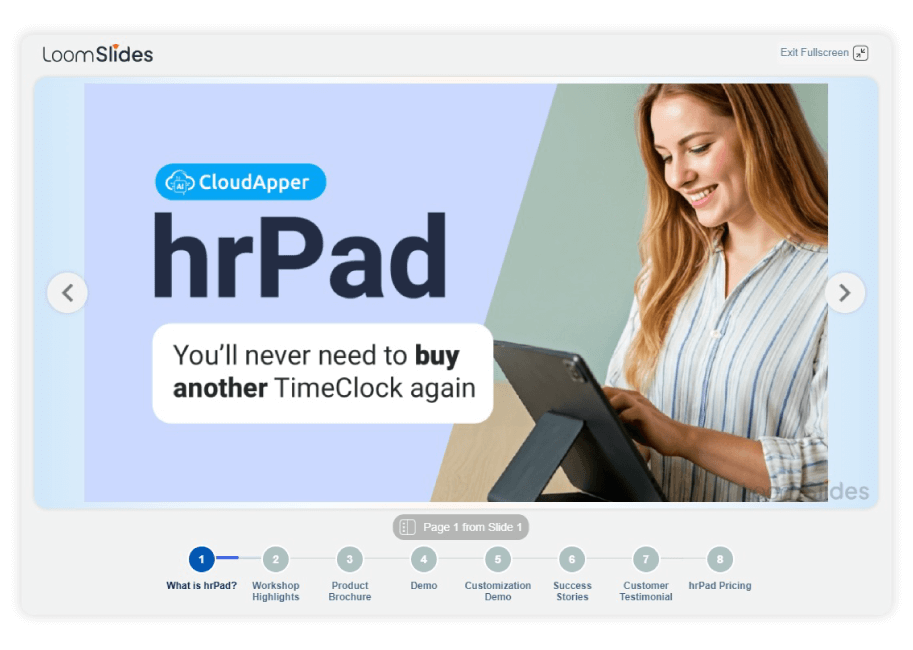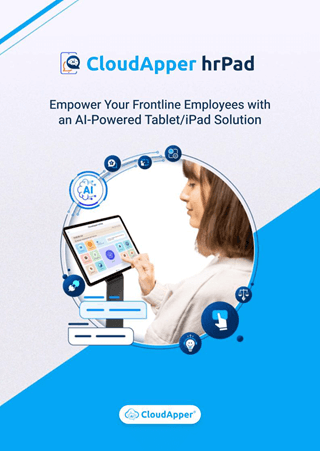Table of Contents
Last-minute absences and no-call-no-shows cost U.S. businesses billions annually in lost productivity, overtime premiums, and operational disruptions. For industries relying on shift workers—healthcare, retail, manufacturing, hospitality—a single unfilled shift can cascade into customer service failures, safety risks, and employee burnout as remaining staff scramble to cover gaps.

For more information on CloudApper hrPad visit our page here.
The root cause often isn’t employee negligence. It’s communication failure. Employees forget their schedules, miss updates posted to portals they rarely check, or can’t easily communicate availability changes. Meanwhile, managers waste hours making phone calls, sending emails that go unread, and manually coordinating coverage.
The solution isn’t more complex scheduling software—it’s meeting employees where they already are: on their mobile phones, via text messaging.
Why Text Messaging Works for Shift Workers
Text messaging boasts a 98% open rate compared to email’s 20%. More importantly, texts are read within minutes of receipt. For frontline employees who may not have company email or regularly access scheduling portals, SMS provides direct, immediate communication that requires no app downloads or password resets.
Consider the typical shift worker experience: they finish a shift, leave the workplace, and disconnect from company systems. Days later, they might be scheduled for an unexpected shift but never saw the update posted to the employee portal. By the time the manager realizes they’re not coming, it’s too late to arrange coverage.
Automated text messaging flips this dynamic. Employees receive shift confirmations, reminders, and schedule changes directly on their personal phones. They can respond instantly, giving managers real-time visibility into potential coverage gaps while there’s still time to act.
The Components of Effective Automated Shift Notifications
Successful shift notification automation requires more than bulk text messaging. It needs intelligence, integration, and actionable workflows.
- Intelligent Scheduling Integration
Automated notifications must sync with your workforce management system in real-time. When schedules are created or modified, the system should automatically trigger appropriate notifications without manual intervention. This ensures employees always have current information and eliminates the risk of human error in communication.
- AI-Powered Confirmation Requests
Simple notifications aren’t enough—you need confirmation loops. AI-driven systems can automatically send confirmation requests before each shift, asking employees to verify their availability with a simple text response. This proactive approach surfaces potential absences hours or days in advance rather than minutes before shift start.
The AI component is crucial here. Rather than fixed reminders at rigid times, intelligent systems learn patterns—sending confirmations at optimal times based on when employees typically respond, recognizing communication preferences, and escalating appropriately when confirmations aren’t received.
- Automatic Escalation and Manager Alerts
When an employee doesn’t confirm their shift or indicates they can’t make it, managers need immediate notification. Automated escalation ensures supervisors get real-time alerts about potential coverage gaps, with enough lead time to implement contingency plans.
The system should distinguish between routine confirmations and genuine problems, filtering noise so managers only receive actionable alerts requiring intervention.
- Proactive Shift Filling and Bidding
The most sophisticated systems don’t stop at problem identification—they facilitate solutions. When a shift becomes available, automated notifications can instantly alert eligible employees who might want additional hours. Employees can bid for or claim open shifts directly via text, with the system managing the selection process based on seniority, qualifications, overtime rules, and other business logic.
This transforms the frantic manager-calls-everyone-at-2am scenario into an orderly process where willing employees self-select into available shifts, often within minutes of the opening being created.
Real-World Implementation: hrPad’s Intelligent Approach
CloudApper’s hrPad demonstrates how AI-powered text messaging automation integrates seamlessly into existing HR infrastructure. The hrPad HR kiosk solution works with all major HCM platforms—including UKG, Workday, SAP SuccessFactors, Oracle HCM Cloud, ADP, and others—pulling schedule data and pushing confirmations through automated SMS workflows.
Preventing Absence-Related Financial Loss
hrPad’s AI automatically sends shift confirmation requests via text message at optimal times before each scheduled shift. Employees receive a simple message: “You’re scheduled for [shift details]. Reply YES to confirm or NO if you can’t make it.”
This seemingly simple interaction prevents the cascading costs of last-minute absences. When an employee indicates they can’t work a scheduled shift, managers receive immediate alerts with sufficient time to arrange coverage. The system tracks confirmation rates, identifies patterns of non-confirmation that might indicate disengagement, and provides analytics that help managers address attendance issues proactively rather than reactively.
Organizations using hrPad’s shift confirmation feature report significant reductions in no-call-no-shows and last-minute scrambling. The financial impact extends beyond direct labor costs—reduced overtime premiums, fewer customer service failures from understaffing, and decreased manager stress and burnout.
Intelligent Shift Bidding
When shifts open—whether from planned absences, confirmed cancellations, or business needs—hrPad’s AI automatically notifies qualified employees via SMS. The message is simple: “Extra shift available [details]. Reply CLAIM to accept or PASS to decline.”
Behind this simplicity, the system handles complex business logic. It determines which employees are eligible based on:
- Skill sets and certifications required for the position
- Current hours worked and overtime implications
- Seniority and preference settings
- Labor law compliance including rest period requirements
- Budget constraints and labor cost targets
Multiple employees might receive the notification simultaneously, with the system managing the claiming process based on predefined rules. The first qualified respondent might get priority, or seniority rules might apply—the configuration adapts to each organization’s policies.
This automated bidding system transforms shift coverage from a manager burden into an employee opportunity. Workers who want additional hours can claim them immediately via text, without phone tag or waiting for manager callbacks. The system updates the HCM system automatically, ensuring payroll and compliance tracking remain accurate.
Universal HCM Compatibility
One of hrPad’s key advantages is its ability to work alongside existing HR technology investments. Organizations don’t need to replace their HCM systems or migrate data. hrPad integrates with major platforms through secure APIs and standard connectors, pulling schedule information and pushing updates bidirectionally.
This means the automated text messaging and shift bidding functionality layer on top of UKG Pro, Workday HCM, SAP SuccessFactors, Oracle, ADP Workforce Now, or other systems without disrupting existing workflows. Managers continue using their familiar HCM interfaces while employees benefit from mobile-first, SMS-based communication.
Measuring Success
Effective shift notification automation should deliver measurable improvements:
- Reduced no-call-no-show rates: Track incidents before and after implementation
- Faster shift fill times: Measure how quickly open shifts are claimed
- Decreased manager time spent on scheduling: Quantify hours saved from manual calling and coordination
- Lower overtime costs: Monitor unplanned overtime from last-minute coverage gaps
- Improved employee satisfaction: Survey workers about schedule communication and flexibility
Organizations implementing automated shift notifications with AI-powered confirmation typically see 40-60% reductions in scheduling-related absences and dramatic decreases in manager time spent on coverage coordination.
The Competitive Advantage
In tight labor markets, small operational improvements create significant competitive advantages. Organizations that make it easier for employees to manage schedules, claim additional shifts, and communicate availability attract and retain better talent.
Automated shift notifications aren’t just about preventing absences—they’re about creating responsive, employee-friendly workplaces that respect workers’ time and provide flexibility where possible. When employees can claim extra shifts via text while waiting in a grocery line, or confirm their availability without logging into portals, work becomes more manageable.
For HR leaders and operations managers facing chronic understaffing and attendance challenges, automated text messaging represents low-hanging fruit: a relatively simple technology implementation that delivers immediate, measurable returns.
Ready to eliminate the stress and cost of last-minute absences? Discover how hrPad’s AI-powered shift notifications integrate with your existing HCM at cloudapper.ai
What is CloudApper AI Platform?
CloudApper AI is an advanced platform that enables organizations to integrate AI into their existing enterprise systems effortlessly, without the need for technical expertise, costly development, or upgrading the underlying infrastructure. By transforming legacy systems into AI-capable solutions, CloudApper allows companies to harness the power of Generative AI quickly and efficiently. This approach has been successfully implemented with leading systems like UKG, Workday, Oracle, Paradox, Amazon AWS Bedrock and can be applied across various industries, helping businesses enhance productivity, automate processes, and gain deeper insights without the usual complexities. With CloudApper AI, you can start experiencing the transformative benefits of AI today. Learn More


























